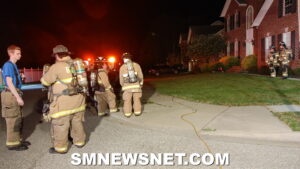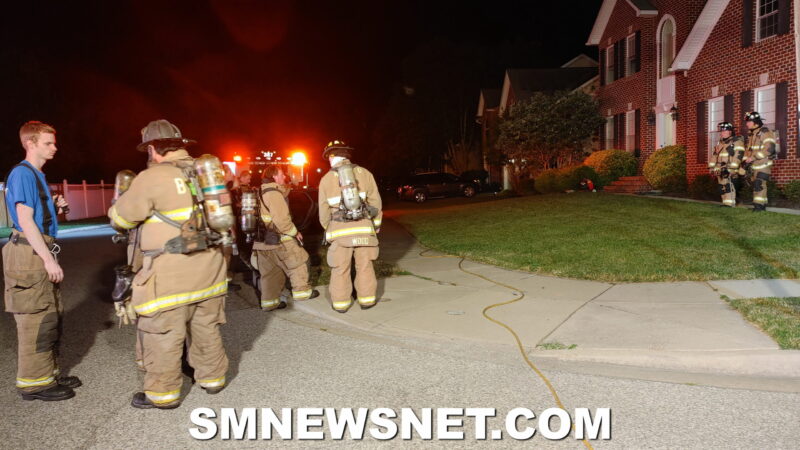 On Saturday, June 18, 2022, at approximately 1:20 a.m., firefighters from Bay District Volunteer Fire Department responded to the 46000 block of Pembrooke Street in Lexington Park, for the Carbon Monoxide alarm with no symptoms.
On Saturday, June 18, 2022, at approximately 1:20 a.m., firefighters from Bay District Volunteer Fire Department responded to the 46000 block of Pembrooke Street in Lexington Park, for the Carbon Monoxide alarm with no symptoms.
Upon arrival of Engine 32 with 4 personnel, firefighters located two patients with symptoms, with one patient being semi-conscious.
The incident was upgraded to a CO alarm with symptoms, bringing firefighters from NAS Patuxent River and emergency medical personnel to the scene.
Firefighters entered the residence and discovered readings of 80 ppm on the first floor, and over 40 ppm on the second floor of the residence.
Health effects and symptoms from Carbon Monoxide (CO) are based on the different levels and length of exposure as well as the patients age and health condition. The concentration of CO is measured in parts per million (ppm). The exposure of CO in the range from 1 to 70 ppm are uncertain but most people will not experience any noticeable symptoms. As the level of CO rises, and remains above 70 ppm, symptoms become more noticeable and patients may have headaches, fatigue, and nausea. As CO levels increase even more to above 150 to 200 ppm, the concentration can become deadly if its persistent and patients will have disorientation, unconsciousness, or even death.
Emergency medical personnel transported two victims to an area hospital, and obtained at least one care refusal form on the scene.
Firefighters operated on the scene for over an hour and a half and secured all utilities to the residence and ventilated the residence for approximately 20 minutes. Gas/utility companies responded to investigate the cause of the leak.
About CO – Carbon Monoxide is a gas that you cannot see, taste or smell and in the home. Fuel-powered devices can provide wonderful benefits to families when used correctly, and these devices emit carbon monoxide. Subsequently, carbon monoxide poisoning can result from faulty furnaces or other heating appliances, portable generators, water heaters, clothes dryers, or cars left running in garages. Carbon monoxide poisoning can cause severe side effects or death. It is vitally important to have and maintain a working carbon monoxide detector.
Make sure your home has a carbon monoxide alarm. If you don’t have one, please go out and get one. As with smoke alarms, you should have a carbon monoxide alarm on every level of your home, especially near sleeping areas, and keep them at least 15 feet away from fuel-burning appliances. You won’t know that you have a carbon monoxide leak without a working alarm. Remember to test alarms regularly and replace them every five to seven years, depending on the manufacturer’s label.
Harmful carbon monoxide fumes come from many sources. Awareness and safety precautions can prevent tragedies. Don’t use a grill, generator or camping stove inside your home, garage or near a window. If you need to warm a vehicle, remove it from the garage immediately after starting it and never leave a vehicle engine running inside a garage, even if the doors are open. Never use your oven or stovetop to heat your home. Outside of your home, make sure vents for the dryer, furnace, stove and fireplace are clear of snow and other debris.
If your carbon monoxide detector alarm goes off, immediately move outdoors. Account for everyone inside your home. Call 911 or the fire department and remain outside until emergency personnel arrives to assist you.



